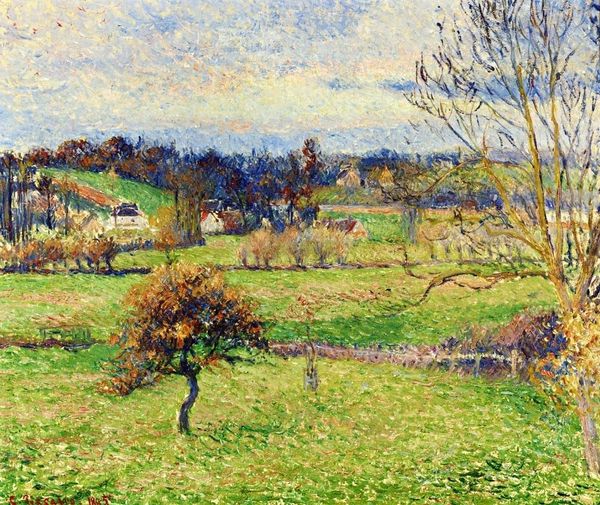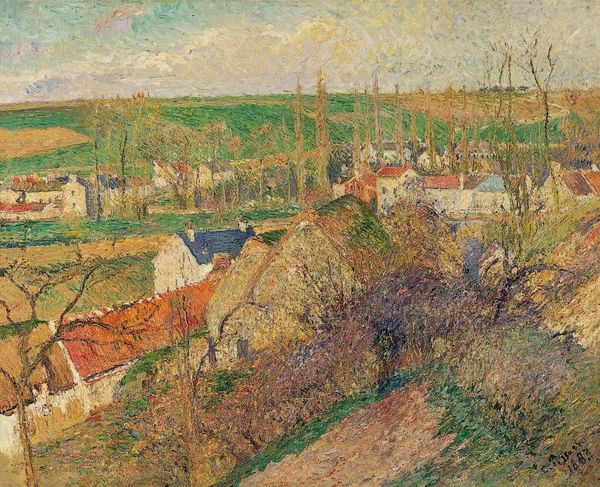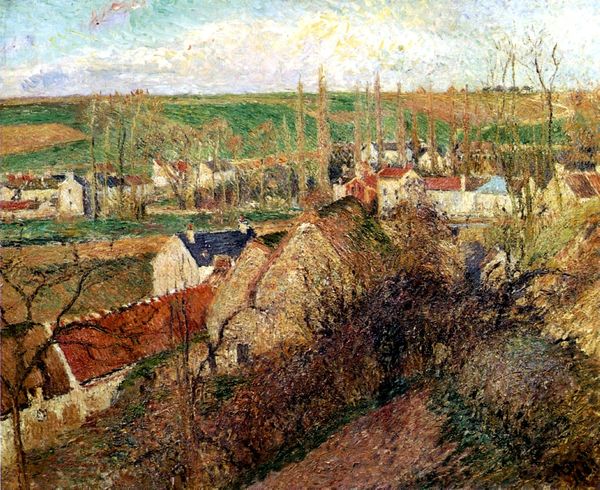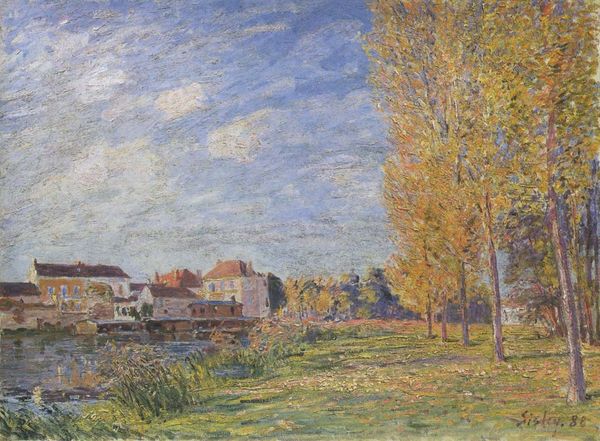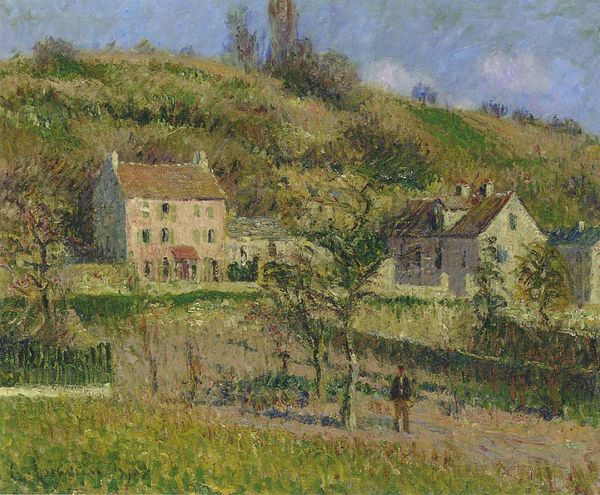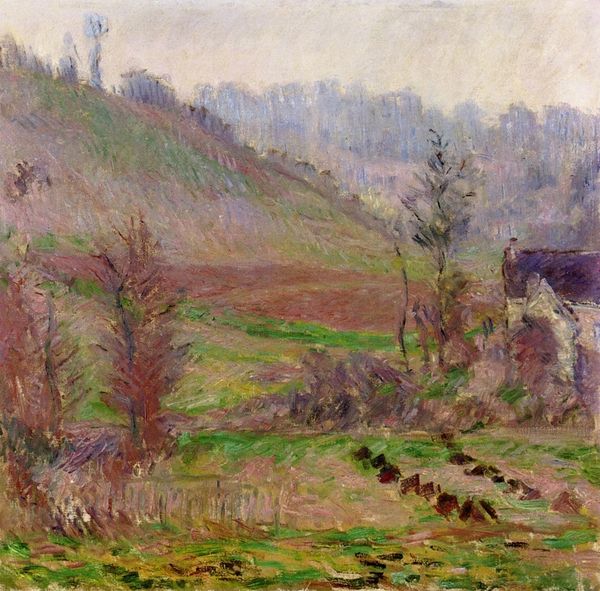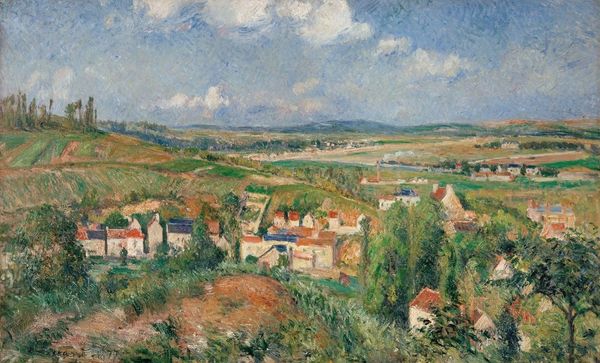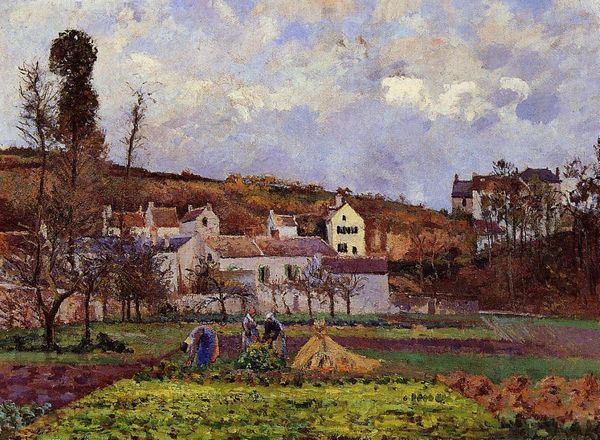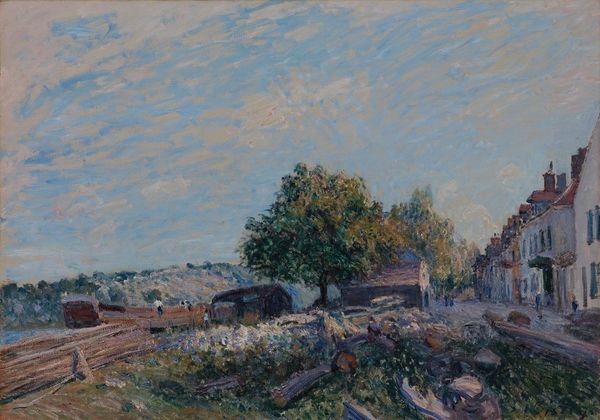
painting, plein-air, oil-paint
#
impressionist
#
painting
#
impressionism
#
plein-air
#
oil-paint
#
landscape
#
cityscape
Copyright: Public domain
Editor: This is Claude Monet's "Vetheuil under the Sun," painted in 1880. It's an oil painting and has a sort of dreamlike hazy quality, the village almost melts into the landscape. What do you see in this piece? Curator: I see more than just a pretty landscape; I see a statement about community and place. Consider the year: 1880. France was still recovering from the Franco-Prussian War and the Paris Commune. The rapid industrialization was transforming French society, displacing rural populations and challenging traditional ways of life. Doesn’t Monet’s focus on a cohesive village nestled in nature, almost resisting definition, feel like a yearning for stability and a perhaps a subtle critique of the period’s transformations? Editor: I hadn’t thought about the historical context. So the haziness, the lack of clear lines, it's not just impressionistic style, it's connected to the feeling of displacement? Curator: Exactly! And what about the sunlight itself? How does it affect the perception of the town, and maybe our perception of labour? Editor: It’s soft, but also strong. It washes over the entire scene, democratizing it. It’s a contrast to more rigid academic painting where light was often used to emphasize class or status. Here, everyone gets the sun. Curator: Precisely. This connects to socialist philosophies emerging at the time. Monet perhaps suggests a utopian vision through the act of painting itself, doesn’t he? Editor: Wow, that really changes how I see the painting! I’ll never look at an Impressionist landscape the same way again. Curator: Nor will I. It's the beauty of revisiting art through different lenses.
Comments
No comments
Be the first to comment and join the conversation on the ultimate creative platform.

